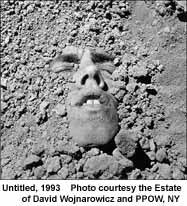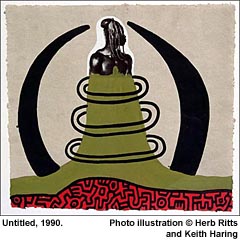|
HERB RITTS, the
Los Angeles-based portraitist, has been called a “star in his own
right” who turns “many of his subjects into instant icons”:
 There
was a photographer whose work on the subject of AIDS always had resonance
for me. David Wojnarowicz, who died in 1992, did self-portraits showing
a head buried with dirt all over the face, as if he himself has already
been buried in the ground. He worked in a variety of media but he was
especially forward-thinking as a conceptual photographer. That image
always struck me. It’s as if he was already in the ground and yet
he was still creating art. There
was a photographer whose work on the subject of AIDS always had resonance
for me. David Wojnarowicz, who died in 1992, did self-portraits showing
a head buried with dirt all over the face, as if he himself has already
been buried in the ground. He worked in a variety of media but he was
especially forward-thinking as a conceptual photographer. That image
always struck me. It’s as if he was already in the ground and yet
he was still creating art.
And now, like so many others, he’s no longer here to make pictures.
AIDS as a disease has wiped out huge stockpiles of talent in the culture.
It has ravaged the files. People in the prime of their lives or even
younger have suddenly been struck down. When that happens, you’re
losing a generation of those who could have had a huge, lasting effect.
I was very close
with Keith Haring. We had a show together before he died (in 1990) in
which we collaborated: He’d paint on my photographs. It was a melding
of photography and painting.  We
had quite a nice show that traveled. I got to really hang out with him.
I would see how prolific he was. He was amazing. Every minute he was
doing something. He loved kids. He was such a charming person who really
had a talent in his own niche. We
had quite a nice show that traveled. I got to really hang out with him.
I would see how prolific he was. He was amazing. Every minute he was
doing something. He loved kids. He was such a charming person who really
had a talent in his own niche.
Yes, many friends of mine have been affected. But in terms of an artist,
one who collaborated with photographers on occasion and had an interest
in photography, Keith Haring was suddenly gone.
The real impact of AIDS is the void that it leaves. It’s what you
don’t ever see, the photography that hasn’t been made. Photographs
that will not be there on the walls. Photographs that will not be there
to affect people in generations to come.
I just hope, 20 years from now, there’s no 40-year reunion on this
subject.
|